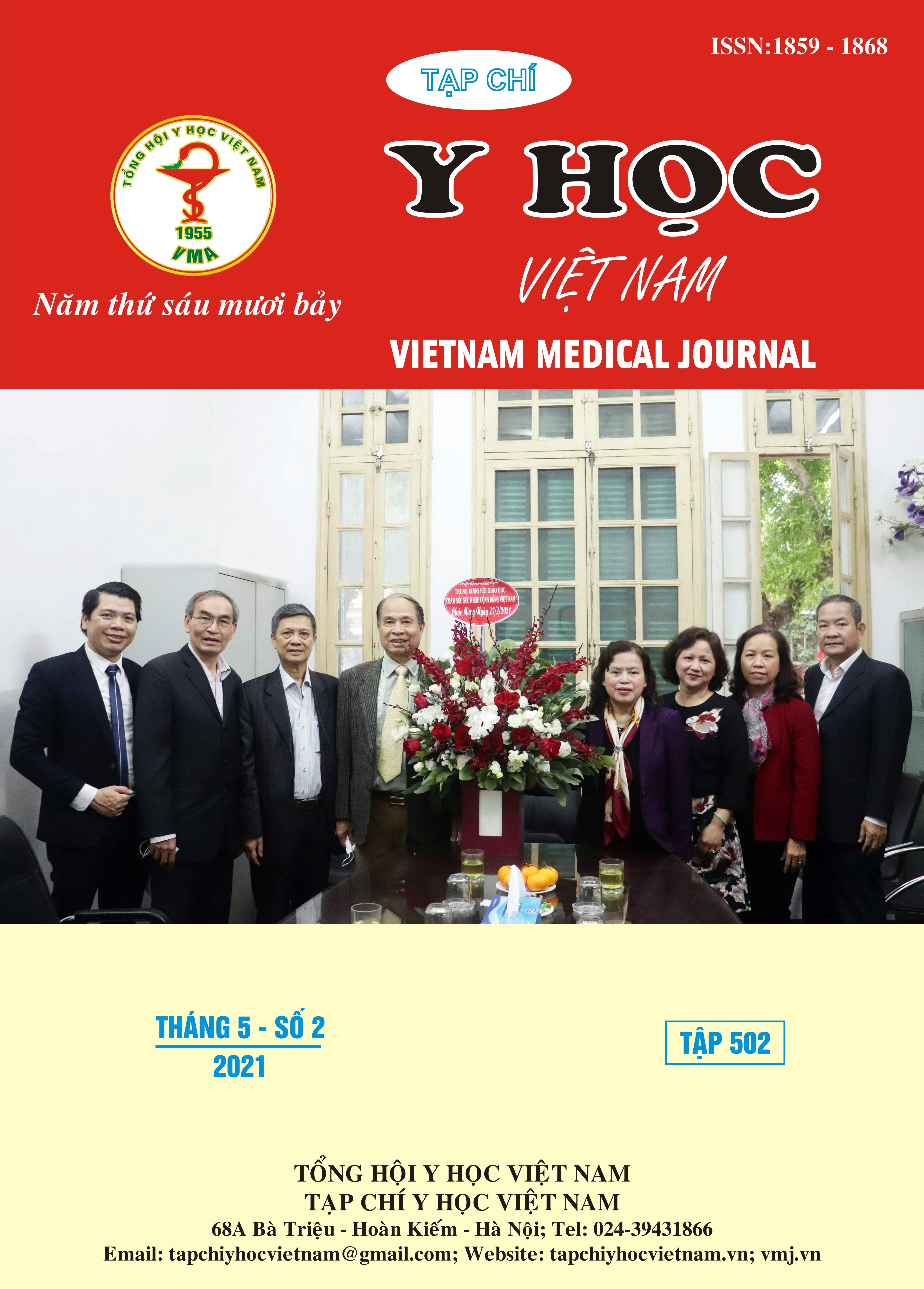EVALUATION OF DERMOSCOPY IN DIAGNOSIS OF TINEA CAPITIS
Main Article Content
Abstract
Objectives: To investigate the sensitivity, specificity, positive diagnostic value, and negative diagnostic value of dermoscopy on patients with tinea capitis at the National Hospital of Dermatology from January 2020 to May 2020. Subjects and methods: 53 patients with clinical diagnosis of tinea capitis were carried out by two methods: dermocopy and culture. From there, calculate the sensitivity and specificity of dermoscopy compared with the culture (gold standard). Results: The diagnostic value of tinea capitis by dermocopy is sensitivity 95.1%, specificity 33.3%, positive predictive value 83%, negative predictive value 66.7%. The “zigzag” sign was more common in the tinea capitis group (65.9%) than in the non-fungal group. The combination of signs of skin scales + comma / zigzag / shape between the scalp fungus group and the non-fungal infection had a statistically significant difference with p <0.05. “White sheaths” sign is helpful to diagnosis Trichophyton and Microsporum infections. Conclusion: Dermoscopy can be used as an useful tool in the diagnosis of tinea capitis
Article Details
Keywords
dermoscopy, tinea capitis
References
2. Waśkiel-Burnat A., Rakowska A., Sikora M. et al (2020).Trichoscopy of Tinea Capitis: A Systematic Review. Dermatol Ther (Heidelb), 10(1), 43-52.
3. Dhaille F., Dillies A.S., Dessirier F. et al (2019). A single typical trichoscopic feature is predictive of tinea capitis: a prospective multicentre study. British Journal of Dermatology, 181(5), 1046-1051.
4. Isa R.I., Amaya B.Y., Pimentel M.I. et al (2014). Dermoscopy in tinea capitis: a prospective study on 43 patients. Medicina Cutanea Ibero-Latino-Americana, 42(1-3), 18-22.
5. Genedy R.M., Sorour O.A., Elokazy M.A. (2021). Trichoscopic signs of tinea capitis: a guide for selection of appropriate antifungal. International Journal of Dermatology, 60(4), 471-481.
6. Bourezane Y.(2017). Analysis of trichoscopic signs observed in 24 patients presenting tinea capitis: hypotheses based on physiopathology and proposed new classification, Elsevier.
7. Ekiz Ö., Şen B., Rifaioğlu E. et al (2014). Trichoscopy in paediatric patients with tinea capitis: a useful method to differentiate from alopecia areata. Journal of the European Academy of Dermatology and Venereology, 28(9), 1255-1258.


